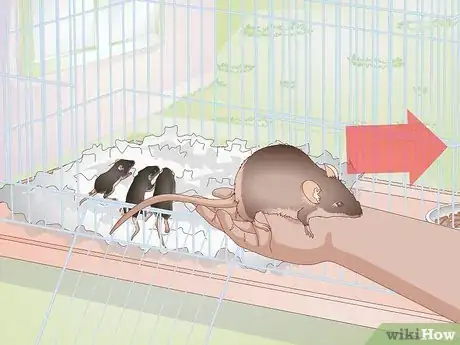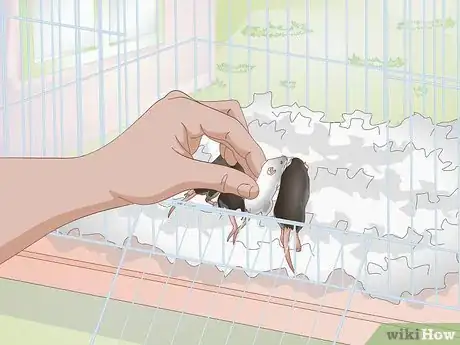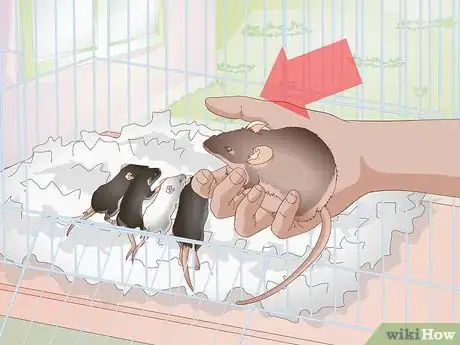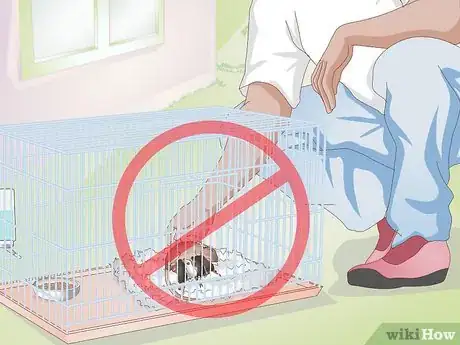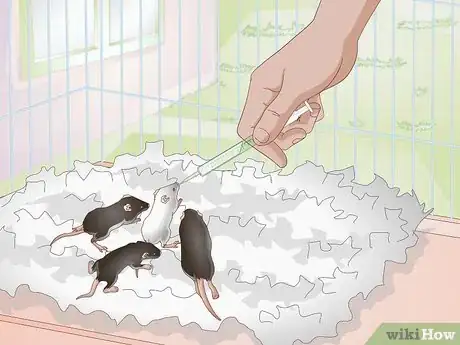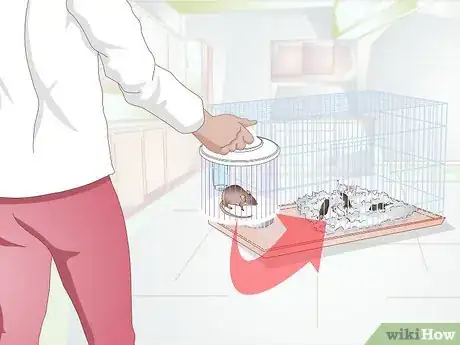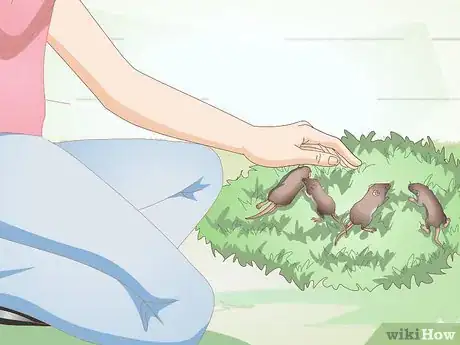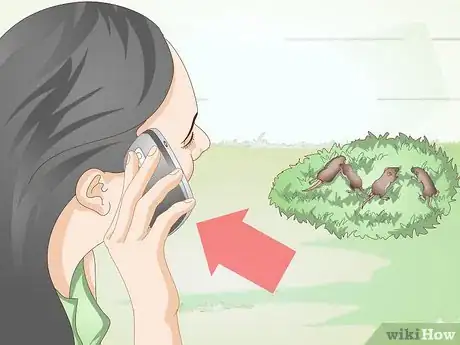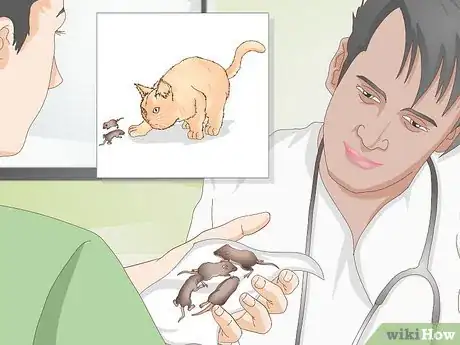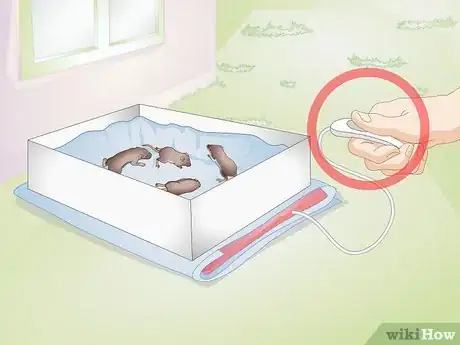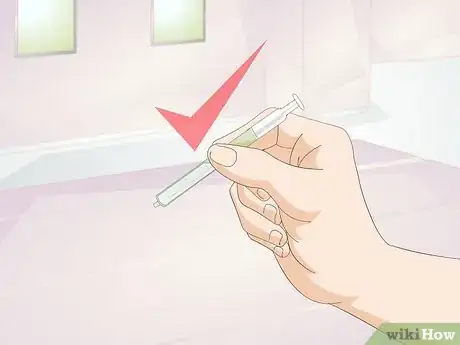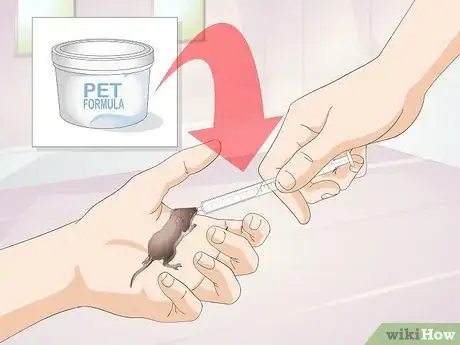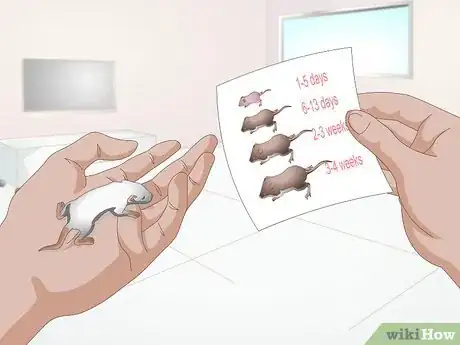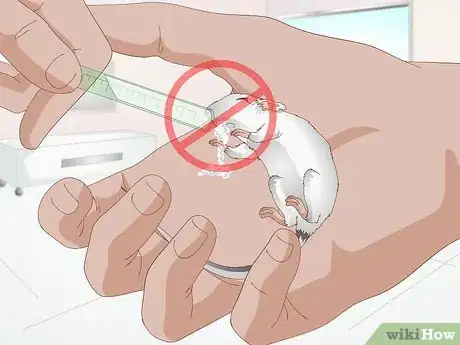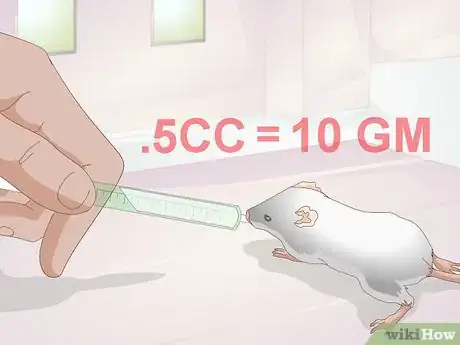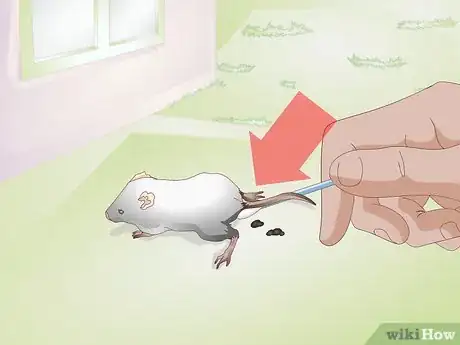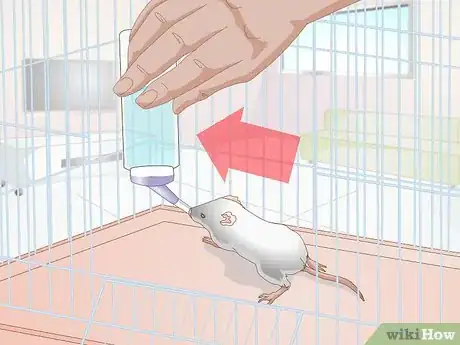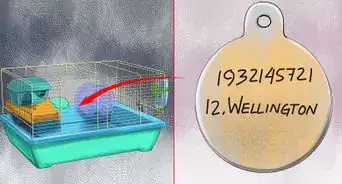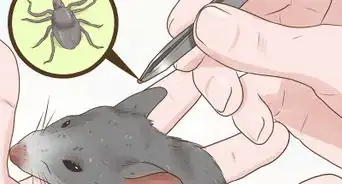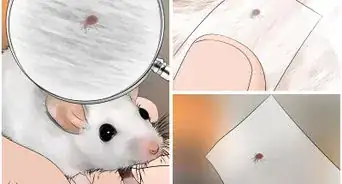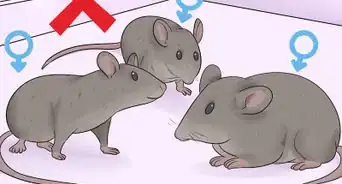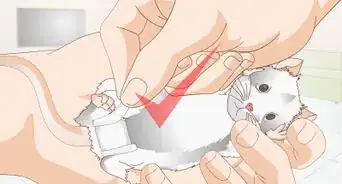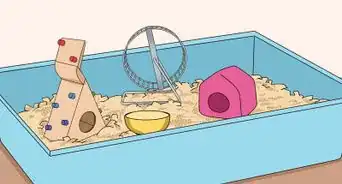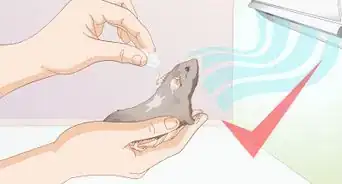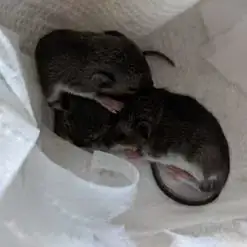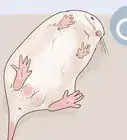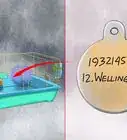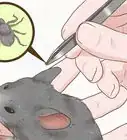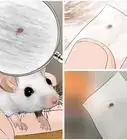This article was co-authored by Pippa Elliott, MRCVS. Dr. Elliott, BVMS, MRCVS is a veterinarian with over 30 years of experience in veterinary surgery and companion animal practice. She graduated from the University of Glasgow in 1987 with a degree in veterinary medicine and surgery. She has worked at the same animal clinic in her hometown for over 20 years.
There are 8 references cited in this article, which can be found at the bottom of the page.
wikiHow marks an article as reader-approved once it receives enough positive feedback. In this case, 91% of readers who voted found the article helpful, earning it our reader-approved status.
This article has been viewed 420,566 times.
Adult wild mice can carry the deadly Hantavirus, along with fleas, ticks, and worms, so you should always release an adult mouse into the wild. It is cruel to keep an adult wild mouse because it will never lose its fear of humans, no matter how much it is handled. A baby wild mouse, on the other hand, can't take care of itself on its own, so raising it by hand is actually the kindest thing to do. It will lack basic survival skills as an adult, so you should continue to keep it in captivity if at all possible. Hand-raised baby wild mice tend to be affectionate and loyal to their human caregivers, and are smarter than domesticated mice.
Steps
Fostering a Baby Wild Mouse with Another Mother
-
1Coax the foster mother out of her nest. If you have a domestic mouse with babies roughly the same size, you may be able to get the mother mouse to take care of the baby wild mouse. Lure the mother mouse out of her nest and put her in a separate holding area, so she can't see what you're doing.[1]
- Fostering is less risky than hand-feeding a baby that is less than one and a half weeks old. (About the time they first open their eyes.)
-
2Change the scent of the wild baby mouse. Very carefully, rub the wild baby mouse with bedding from the mother mouse's cage.[2]
- Use only clean bedding – soiled bedding materials can harm the baby mouse.
Advertisement -
3Put the baby wild mouse with the other babies. Place the baby wild mouse in between and underneath the existing baby mice. Try not to touch the babies any more than you need to, and be very gentle.[3]
-
4Return the mother mouse to the cage. Place the mother mouse in her cage, slightly away from the nest. Allow her to find the babies on her own – don't force her to join the group.[4]
-
5Leave them alone. Do not hover over the cage to watch, or try to disturb the mice in any way. If the mother becomes even slightly upset, she may abandon all the babies.
- Be aware that there is a very real risk that the mother may abandon the new mice (or all the babies.)
- Be very careful when introducing the baby mouse, and leave mother and babies alone when you don't need to handle them.
- You will hear loud squeaks if something bad happens, so there is no need to watch the cage.
-
6Assist with feeding multiple wild baby mice. If you need the mother to foster several wild baby mice at once, she will probably not have enough milk to feed them all. Coax the mother away from her nest several times a day, and place her in a separate tank. Hand-feed the babies the same way you would feed an orphaned baby mouse.[5]
- If the babies have “milk bellies” (a visible white band or area on their stomach, which is the actual milk in their tummy), they are getting enough milk from the mother without your help.
- Check the babies several times a day during the first few days, to make sure they have milk bellies and are not losing weight. Babies can lose weight very quickly, and will need to be fed right away.
-
7Consider purchasing a foster mother from a pet store. If you don't have a mother mouse, you may be able to buy one that has recently given birth, along with her babies. If you have a very young baby mouse, its chances of survival are much better with a foster mother than if you hand-feed it yourself.[6]
- Moving them carries the risk that the mother will abandon her babies, so weigh the risks very carefully before trying it.
Rescuing a Baby Wild Mouse
-
1Make sure the nest has been abandoned. If you find a nest with no mother, you may have inadvertently frightened the mother away or she left to find food to eat. Leave it alone and check back later – if the mother has not returned, she will most likely not return.[7]
- Try to handle them as little as possible, but don't worry too much about this. Unlike birds, mice will not reject their young simply because they have human scent on them.
- After 4-6 hours, if you check the babies and they do not have white bands on their tummies (“milk bellies”), this means they have not been fed. The mother is either deceased, or has abandoned the nest.
-
2Call a wildlife rehabilitator. If you find a baby wild mouse (or an empty nest of baby mice), call your local wildlife rehabilitation office. Transferring the baby mouse to a wildlife professional is the best chance it has for survival. In the meantime, there are things you can do to try to keep the baby alive.[8] [9]
- If there is no rehabilitation office in your area, the next best option is to try to hand-feed the baby.
- When you call, ask the rehabilitator what they plan to do with the mice. They may try to raise them, or they may use them to feed other animals they are taking care of. If you don't want your baby mouse to wind up as owl food, you'll need to care for them yourself.
-
3Take cat victims to a vet immediately. If the mouse has been attacked by a cat, bacteria in the cat's mouth will almost always cause a fatal infection called septicemia. You can take the mouse to a vet for emergency treatment, but it is unlikely to survive.[10]
-
4Make the baby comfortable. Line a box with clean, soft rags. Trim off any loose threads that might become tangled around the mouse's legs.[11]
- Always wash your hands after handling wild mice. They can carry a very dangerous, highly contagious virus called Hantavirus.
- If the baby survives the first few days, transfer it to a glass or plastic ventilated container that it won't be able to chew through.
-
5Keep the baby mouse warm. A baby mouse should be kept warm – 80-100 degrees Fahrenheit is ideal (you can check this with a thermometer.) Turn a heating pad to its lowest setting and wrap it in a soft, clean towel or rag. Place the heating pad under the box, below the mouse.[12] [13]
- Be sure the heating pad isn't too hot – if it feels even slightly hot to your hand, let it cool in the box for a minute before pressing it up against the mouse.
- If you don't have a heating pad, try using a bottle or bag filled with warm, cooked rice. You'll need to keep warming or refreshing the rice as it cools. Use any kind of bottle that can be reheated – a plastic bottle or thick zip-lock freezer bag would work well.
- A healthy mouse will be able to maintain its own body temperature at about 2 and ½ weeks old, as long as its container is in a warm, indoor room.
-
6Obtain a small feeding syringe. An eye-dropper is too large to feed a small baby mouse. You will need a tiny syringe (without the needle.) Pet stores often have small syringes with slender, curved spouts specifically for feeding baby rodents.
-
7Rehydrate the baby mouse. Unless you are certain the baby was with its mother less than an hour ago, you should rehydrate the baby before feeding it formula. Feed 3 - 4 drops of a non-flavored electrolyte beverage like Pedialyte directly into the baby's mouth. Wait an hour before feeding formula.[14] [15]
Hand-Feeding a Wild Baby Mouse
-
1Determine the baby's age. In order to feed the baby mouse correctly, you will need to determine its age. Consult a chart that shows photos of a baby mouse as it develops, and match your mouse to one the same size in the pictures.
- Baby mice begin to grow fur at about 3-5 days old.
- Baby mice will open their eyes at about 10-14 days old.
- Soon after a baby mouse opens its eyes, it enters the “flea” or “popcorn” stage. A healthy mouse at this stage will jump around a lot and will be extremely difficult to hold.
-
2Be very careful to avoid aspiration. Feeding or hydrating a baby wild mouse can lead to aspiration (drowning), if even the smallest amount of fluid gets into its lungs. If you see a bubble come out of the baby's mouth while feeding, the mouse has probably aspirated. [16]
- Hold the baby upright (vertical) when feeding it – never rest it on its back, like a human baby.
- If you do see a bubble, immediately flip the baby upside down (tail up, head down) to prevent any more liquid getting into its lungs.
- Sadly, a young baby mouse is unlikely to survive aspiration. There is a very slight chance that an older baby will survive, if you turn it upside down immediately.
-
3Time the baby's feedings according to its age. An abandoned mouse may actually be a little older than it looks, because it is under-fed and malnourished. Feed the baby according to the age it appears to be.
- A newborn mouse will need to be fed every 1 to 2 hours if it is to survive, all day and all night. Someone will need to stay up through the night to feed it.
- When the baby's eyes open (around 2 weeks old), you can decrease feeding times to every 3 to 4 hours.
-
4Feed the baby mouse according to its size. A baby wild mouse should be fed about .05cc per gram of their own body weight, each time it feeds. A 10 gram baby mouse, for example, should be taking in .5cc of milk every time it feeds. A feeding syringe should show cc measurements.
- Feed your baby kitten formula, watered down to half strength. Baby mice can't digest the thicker formula.
- Hold the baby upright when feeding, to avoid getting any formula in its lungs. Grasp the baby around its middle portion (where a human's waist would be), with the baby's head at the top and its back feet at the bottom. The front feet will probably be inside your hand, depending on the size of the mouse and the size of your hand.
- Dispense the kitten formula into the side of the baby mouse's mouth.
- Be very careful not to get any milk in the baby's nose – the mouse will suffocate. You can dab its face with a Q-Tip after each dose of milk, to keep the airways clear.
- If the baby appears to be losing weight, try to increase the amount of food.
- Never force the baby to eat – feed it gradually.
- If the mouse is extremely small, you can use a (new, clean) fine-tip paintbrush instead of a syringe. Dip the brush into the formula, then dab it into the corner of the baby's mouth.
-
5Encourage the baby mouse to go potty. Baby mice will not eliminate their bowels on their own, and they will die from being backed up if you don't encourage them to go. After feeding, gently rub the baby mouse's belly and anus with a fluffy Q-Tip soaked in warm water, until it goes potty.[17]
- Be careful not to rub so much that you irritate the baby's skin.
- If the baby mouse will not go potty after several minutes, let it rest. Come back half an hour later and try again.
-
6Feed an older baby mouse hard food. Once the baby has its eyes open and seems healthy, you can add solid mouse food to its milk feedings. Continue to feed milk until the baby is 3 ½ to 4 weeks old.
- Suitable hard foods include: premixed rodent food (hamster food is best), cooked rice (they usually prefer white over brown rice), human baby food, and kitten food.
-
7Give older baby mice a water bottle. An older baby that already has its eyes open can be given a rodent water bottle. Hang the bottle on the side of its cage, with the tip of the spout low enough that the mouse can reach it. Allow the mouse to use the water bottle on its own – it's okay if it doesn't want to use it at first.
- Don't give mice water in a bowl – they can easily drown.
Things You'll Need
- Kitten formula, such as KMR
- Small syringe (without the needle)
- Small box with ventilation holes, for pinkies (eyes still closed)
- Fish tank or small rodent cage, for older baby mice (eyes open)
- Bedding materials (unscented toilet paper or kleenex, clean rags, or paper towels)
- Heating pad
- Q-Tips
References
- ↑ http://www.afrma.org/babymsedevdaily.htm
- ↑ http://www.afrma.org/orphanrm.htm
- ↑ http://www.afrma.org/orphanrm.htm
- ↑ http://www.afrma.org/orphanrm.htm
- ↑ http://www.afrma.org/orphanrm.htm
- ↑ http://www.afrma.org/orphanrm.htm
- ↑ http://www.rathelp.org/FosteringYoung.html
- ↑ http://wildliferehabilitators.org/index.html
- ↑ http://www.rathelp.org/FosteringYoung.html#dont
- ↑ https://www.google.com/search?q=septicemia&ie=utf-8&oe=utf-8
- ↑ http://wildliferehabilitators.org/rodents.html
- ↑ http://wildliferehabilitators.org/rodents.html
- ↑ http://www.rathelp.org/FosteringYoung.html
- ↑ http://wildliferehabilitators.org/rodents.html
- ↑ http://thesquirrelboard.com/forums/showthread.php?54162-Please-help!-Orphan-baby-mouse-with-distended-tummy-(full-of-gas-I-guess)
- ↑ http://wildliferehabilitators.org/rodents.html
- ↑ http://www.afrma.org/orphanrm.htm
About This Article
If you encounter a baby wild mouse, wait at least 1 hour to see if its mother returns before you try to save it. If the mother doesn't return, call a wildlife rehabilitator to come rescue it. In the meantime, line a small box with clean rags and carefully place the mouse in it. Make sure you wash your hands right after handling it. If it’s warm out, leave the box outside while you wait. If it’s cold, take the box indoors and place it on a heating pad set to low to keep the mouse from getting too cold. If the mouse’s eyes are closed, you should feed it right away. Mix 4 1/2 cups (1070 mL) of water with 2 teaspoons (8 g) of sugar, ½ teaspoon (3 g) of salt, and ½ teaspoon (3 g) of baking soda. Use a soft-tipped syringe to carefully push some of the mixture into the mouse's mouth. If you don't have a syringe, use the bristles on a clean, small paintbrush to feed the mouse the mixture. Give it a few drops every 2 hours while you wait. If the mouse’s eyes are open when you find them, feed it small pieces of vegetables, fruits, or seeds instead. Keep in mind that it's not recommended to keep a wild mouse as a pet since wild mice aren't domesticated and often carry diseases. A wildlife rehabilitator will be able to rescue the mouse and release it when it's healthy. For tips on how to foster a baby wild mouse with another mother, read on!
